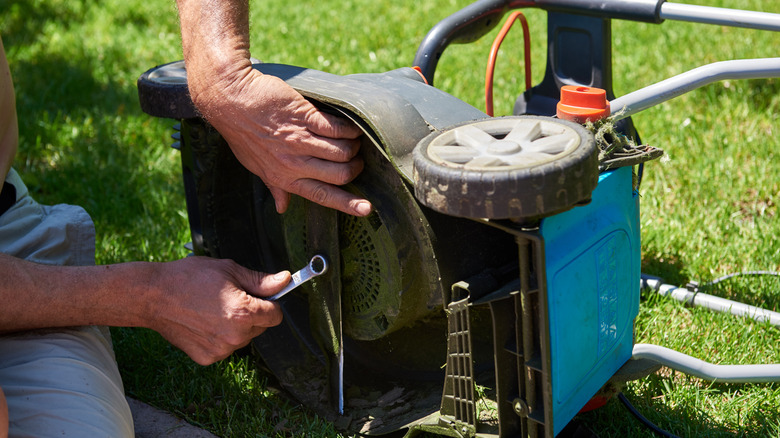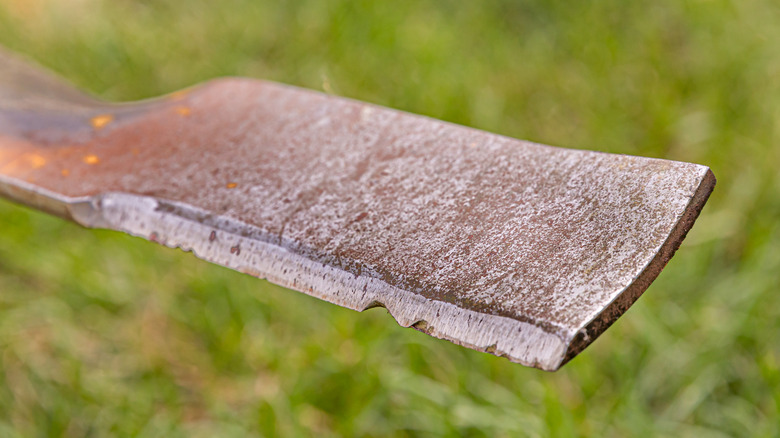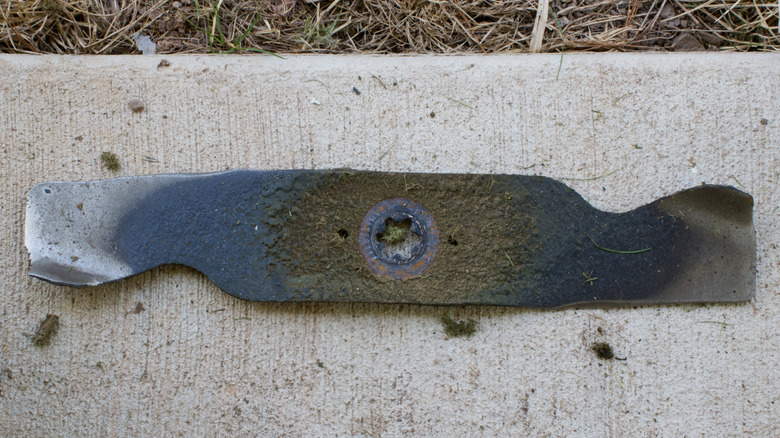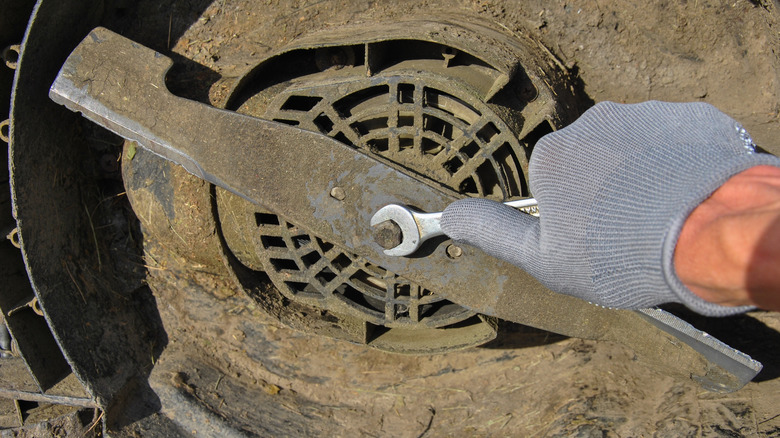Telltale Signs It's Time To Replace Your Lawn Mower Blades (& How Often You Should)
Whether you have a large ride-on lawn mower or a smaller push mower, you still invested a lot of your money into the tool. You want it to be able to do its job and help you cut your lawn. Blade issues are not uncommon with lawn mowers. They can interfere with the tool's ability to properly cut the grass. Instead of leaving your lawn looking neat and clean, the result may be very uneven grass. The tips of the grass may even be very jagged, leaving the whole lawn with a very unprofessional and displeasing appearance. Beyond turning your lawn into an embarrassment, a blade that is not in proper condition can actually spell trouble for the mower itself. You may find that your battery doesn't last as long or a tank of gas doesn't go as far as it once did because of how hard the lawn mower is trying to work to compensate for the blade issue.
From cracks to thinning, it's important to know the telltale signs it's time to replace your lawn mower blades — and how often you should depends on mowing frequency and blade quality. Some lawn mower blade issues can be solved by sharpening. Others will require a replacement. Learning how to identify when a new blade is called for (as opposed to when you can pull out the tools that make it easy to safely sharpen lawn mower blades) can help you maintain a lush and healthy lawn.
Blades with cracks or large chips should be replaced
If your lawn mower blades are damaged, they are not going to be able to cleanly cut your grass. While blades that only have a minor chip may be fixable with sharpening, those with a larger chip will need to be replaced. Identifying the difference between major and minor chips may not be easy if you're not a lawn care professional. However, if you don't think you'll be able to smooth out and eliminate the crack from the surface with your sharpening tools, it is probably not worth your time to try. If you have a professional you trust, or happen to have a bench grinder, slightly larger chips may be fixable, but given the relatively affordable cost of new blades, buying a new one might be the easiest route to take.
While blades with a minor chip may be fixable, those that are cracked will always require a replacement. Attempting to mow your lawn using a cracked blade can be more than simply ineffective. It can also be dangerous. The crack could worsen as the mower is cutting, potentially causing it to go all the way through the metal. If this happens, pieces of the blade could be sent flying out of the mower. As you can imagine, if one of these projectiles was to hit you, another person, or anything on your property, it would likely cause serious injury or damage. Because there is no way to fix a cracked blade, you should always replace it before starting to cut the grass.
A mower with a bent blade should not be used until a new blade is installed
Running over rocks, sprinkler heads, and other things as you're cutting the grass are among the ways that you can accidentally damage your lawn mower. Hitting these hard items can cause the blade to bend. While you might be tempted to try to straighten it out by reshaping it, doing so is not advisable. It will be near impossible to get it back to its original shape.
Using a lawn mower with a bent blade will be more than simply ineffective. It can end up costing you a lot more money in the long run as it will put unnecessary stress on the mower. Trying to mow with a bent blade can result in damage to bearings, the mower's engine, and other key components. As you can probably guess, repairing or replacing any of these parts is going to cost significantly more than you'll need to spend on a new blade, so why risk it? Just get a new blade.
Blades that are too thin from repeated sharpening will need to be replaced
Have you learned to avoid using dull blades (one of the mistakes everyone makes when mowing the lawn)? If so, you may have perfected your technique for sharpening your lawn mower blades. While this is an essential skill to have if you want to ensure that the mower is able to do its job properly — and you don't want to pay for professional sharpening several times a year — there will come a point when the blades will say, "No more."
Sharpening lawn mower blades involves removing a little bit of the metal in order to restore the cutting edge. There is not unlimited metal on the blade, obviously. At some point, there isn't going to be enough metal left to remove, while still ensuring the blades are thick enough and in usable condition. Once you start noticing that the blade is looking a lot thinner than it used to be, plan to replace it. If you continue to use the blade to mow when its edge is overly thin, you're increasing the likelihood that a piece of it will break off. As mentioned earlier, this could result in a serious injury or property damage when a sharp piece of fast-flying metal comes shooting out from the mower.
Lawn mower blades typically need to be replaced every few years
Lawn mower blades are not designed to offer the same lifespan as the mower itself. That is why most are relatively easy to remove and replace. However, there is no set "expiration" date for a lawn mower blade. The frequency with which you'll need to replace yours can depend on a variety of factors. These may include the initial blade quality and thickness, how frequently you mow (and the size of the lawn(s) that you're mowing), and how well you maintain and sharpen the blade.
As a general rule, you should plan on replacing your blade every few years. Most blades can be sharpened between five and ten times before they become too thin and need to be replaced. If you follow the recommended schedule of sharpening your blades about two times each season, this means that you could get up to five years of life out of a blade. Of course, if you sharpen more frequently because of the size of your lawn or notice other signs of damage, the blade may need to be replaced sooner.




